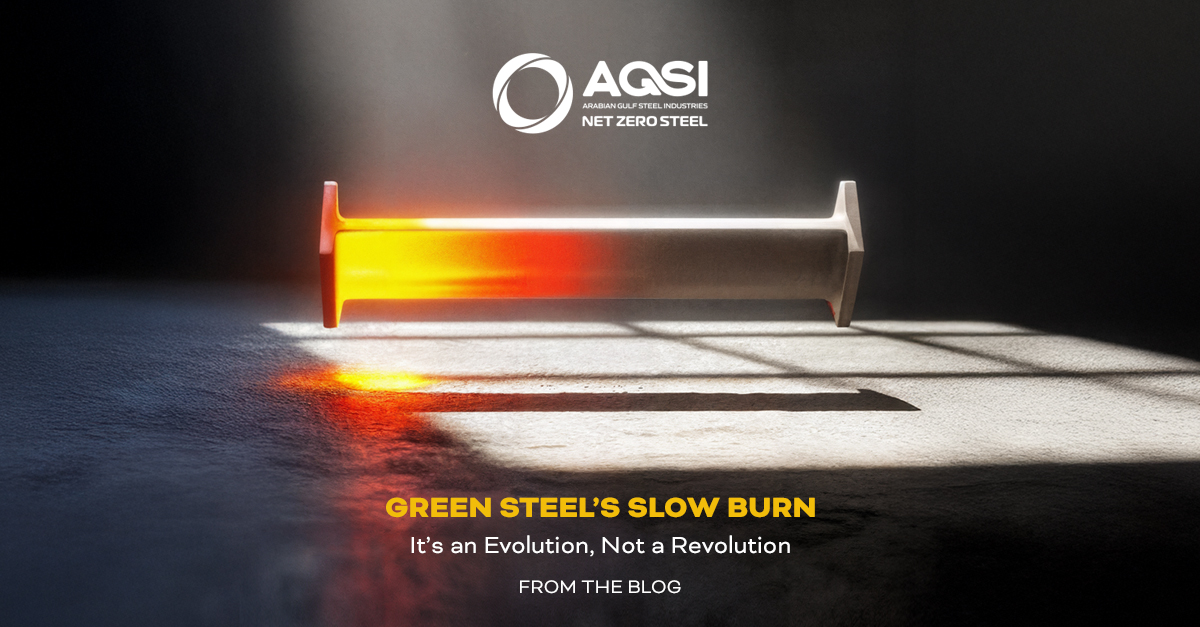The global average carbon intensity of crude steel production has remained stubbornly high, at around 1.9 tonnes of CO₂ per tonne of steel (World Steel Association, 2023). Despite mounting pressure from governments, customers, and investors, progress has been limited, a reminder that the transition is less about sudden breakthroughs and more about gradual change.
Take hydrogen, for example
Hydrogen direct reduced iron (H-DRI) was once hailed as the “silver bullet” for steel decarbonization. As momentum built, Europe and North America producers announced bold plans for fossil-free steelmaking at scale. But the reality soon became clear: the financial and infrastructure hurdles were immense.
In mid-2025, Cleveland-Cliffs cancelled its $1.6 billion hydrogen steel project in Ohio, unable to secure affordable hydrogen supply and facing mounting costs, despite a $500 million U.S. Department of Energy grant (Recycling Today, 2025). Soon after, ArcelorMittal withdrew its German hydrogen DRI plans, noting that green hydrogen “was not yet a viable fuel source” at commercial scale (Recycling Today, 2025). The lesson is straightforward: without abundant, low-cost renewable hydrogen supply, the technology remains a prospect, not an opportunity.
Proven pathways gaining ground
As the hydrogen hype cools, other pathways are quickly gaining traction. Electric arc furnaces (EAFs) which use electricity to melt scrap steel rather than relying on coal-based blast furnaces, are gaining momentum all around the world. In the UK, Tata Steel is replacing its blast furnaces with EAFs as part of its £1.25 billion Port Talbot project, aiming to cut on-site emissions by up to 90% (UK Government, 2025).
Other immediate measures include maximizing scrap recycling to reduce reliance on virgin iron ore, efficiency upgrades to lower energy consumption, and carbon capture pilots supported by Germany’s new CO₂ storage law (German Federal Government, 2025). These solutions alone may not deliver carbon neutrality overnight, but they offer significant reductions today, until larger-scale alternatives become technically and economically viable.
Policy as a decisive factor
Policy support is proving decisive in shaping the industry’s trajectory. When governments provide funding or regulatory clarity, projects move forward; when they don’t, even the best-intentioned ventures can stall.
In the UK, government support was instrumental in moving the Port Talbot project forward. In Germany, reforms enabling industrial CO₂ storage are unlocking new carbon capture initiatives. And in the EU, CBAM has set a precedent by placing a cost on the carbon footprint of imported steel (European Commission, 2023). Those are all clear reminders that policy frameworks can make or break industrial decarbonization (European Commission, 2023).
In the U.S., shifting federal priorities make it harder for firms to commit to multi-billion-dollar investments in unproven technologies. Perhaps the more important point is that the decarbonization of steel will not occur in a single moment, but at a pace shaped by where investment flows. Across the sector, a tendency to pivot is evident: companies like Cleveland-Cliffs and ArcelorMittal have cancelled or delayed projects when the economics did not add up, yet they have not abandoned their long-term commitments to net zero. The World Steel Association and leading producers continue to target carbon neutrality by 2050 (World Steel Association, 2024). While the transition may be gradual, it is steady. As with steel itself, the move toward green steel will be forged by persistence, not haste.
The question remains: can it really be done?
At Arabian Gulf Steel Industries (AGSI), this transition is not theoretical. Verified as a net zero producer with one of the lowest recorded carbon intensities globally, AGSI is already scaling proven solutions. With expansion plans underway to deliver 5 million tonnes of low-carbon steel by 2030, AGSI demonstrates that the sector’s transformation does not depend on speculative technologies. Instead, it comes from persistence, scalability, and alignment with frameworks such as CBAM that define competitiveness in today’s markets.
If there is one takeaway, it is that the steel industry’s transformation is neither stalled nor explosive. It is unfolding as a ‘slow burn’, dictated by physics, economics, and policies, in line with the realities of an infrastructure more than a century old. As AGSI demonstrates, progress does not come from waiting for revolutions, but from scaling practical solutions that work today.
References
- European Commission (2023). Carbon Border Adjustment Mechanism (CBAM). [Online] Available at: https://ec.europa.eu
- German Federal Government (2025). CO₂ Storage Law Reform: Enabling Industrial Carbon Capture. Berlin.
- Recycling Today (2025). Cleveland-Cliffs cancels hydrogen steel project; ArcelorMittal pauses German hydrogen DRI plans.
- UK Government (2025). Tata Steel UK and UK Government announce £500m support for Port Talbot EAF transition.
- World Steel Association (2024). Sustainable Steel: Pathways to Net Zero. Brussels.


